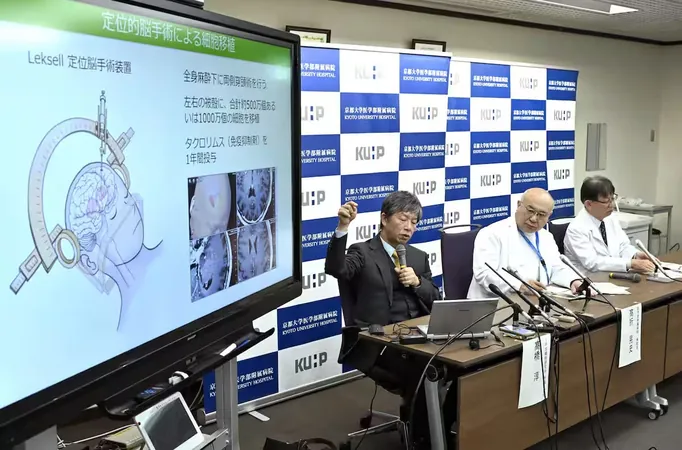
Revealing the Influence of Hepatitis B on Lymphocyte Subsets in Rheumatoid Arthritis Patients: Key Findings from a Recent Study
2025-04-12
Author: Arjun
A Closer Look at the Connection Between Hepatitis B and Rheumatoid Arthritis
The interplay between infections and autoimmune diseases has long intrigued researchers. Recent findings shed light on how Hepatitis B virus (HBV) infection alters the distribution of peripheral blood lymphocytes in patients suffering from Rheumatoid Arthritis (RA). With RA affecting millions globally, understanding these dynamics could pave the way for innovative treatment strategies.
Study Overview: What Does the Data Reveal?
In this extensive study involving 298 RA patients, a significant portion (43 individuals) tested positive for HBsAg, marking them as part of the HBV-RA group. The remaining 255 patients formed a control group. The researchers leveraged demographic and clinical data, diving deep into the nuances of lymphocyte subsets across varying HBV DNA levels.
Shocking Results: Lymphocyte Distribution Variances!
The findings were nothing short of startling: patients with RA concurrent with HBV exhibited a notable increase in CD19+ B cells and CD8+ T cells. This was coupled with a decreased CD4+/CD8+ ratio, a concerning indicator in immune response dynamics. Notably, these trends were amplified in patients with higher levels of HBV DNA, suggesting that viral load may intensify immune alterations.
The Implications: RA, Gender, and Disease Activity
The study revealed essential correlations between demographic factors and disease activity. Male patients not only showed a higher prevalence of concurrent HBV but also had elevated RA disease activity scores (DAS-28). These findings echo a broader understanding that gender plays a crucial role in the clinical manifestation of RA, especially in the context of viral infections.
A Call for More Research: Understanding the Mechanisms
The unique relationship between HBV infection and immune alterations in RA patients indicates that further research is essential. Previous studies hint at a potential role of the virus in exacerbating RA symptoms, but a definitive link remains to be established. The apparent rise in pro-inflammatory CD8+ T cells demonstrates a significant shift in immune response that may necessitate tailored therapeutic approaches.
Final Thoughts: A Growing Area of Concern
As the prevalence of both RA and HBV continues to rise globally, the relevance of these findings cannot be overstated. Clinicians should take note of the implications of HBV positivity in RA patients, considering targeted monitoring and management strategies. This research could help unlock new pathways in understanding autoimmune disorders amid viral infections, a crucial step in improving patient outcomes.

 Brasil (PT)
Brasil (PT)
 Canada (EN)
Canada (EN)
 Chile (ES)
Chile (ES)
 Česko (CS)
Česko (CS)
 대한민국 (KO)
대한민국 (KO)
 España (ES)
España (ES)
 France (FR)
France (FR)
 Hong Kong (EN)
Hong Kong (EN)
 Italia (IT)
Italia (IT)
 日本 (JA)
日本 (JA)
 Magyarország (HU)
Magyarország (HU)
 Norge (NO)
Norge (NO)
 Polska (PL)
Polska (PL)
 Schweiz (DE)
Schweiz (DE)
 Singapore (EN)
Singapore (EN)
 Sverige (SV)
Sverige (SV)
 Suomi (FI)
Suomi (FI)
 Türkiye (TR)
Türkiye (TR)
 الإمارات العربية المتحدة (AR)
الإمارات العربية المتحدة (AR)